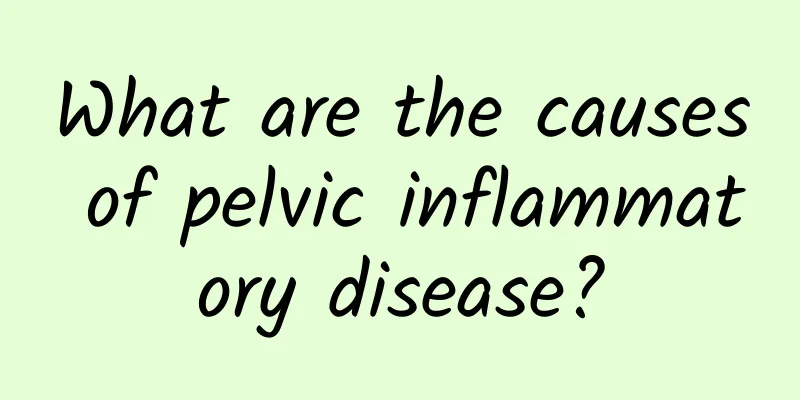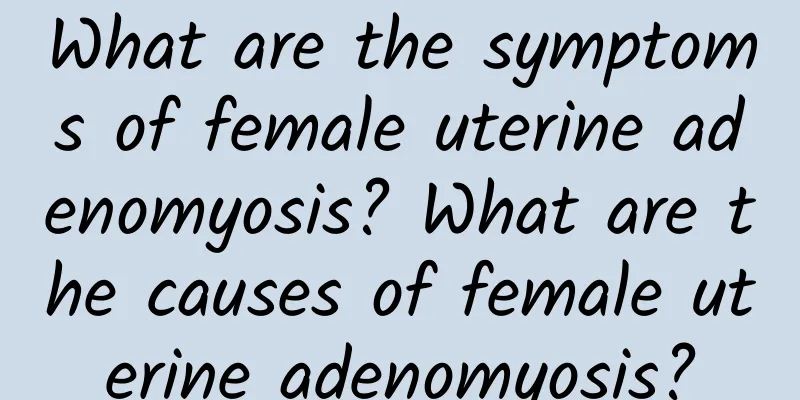What does multiple uterine fibroids mean? What causes polyps in the uterus?

|
What does multiple uterine fibroids mean? What causes polyps in the uterus? Uterine fibroids refer to the presence of multiple fibroids in the uterus at the same time. Fibroids are a common uterine tumor that is formed by the proliferation of uterine smooth muscle tissue. In women, fibroids are one of the most common benign tumors. Although most fibroids are benign, their presence may have an impact on women's quality of life and, in some cases, may require treatment. So, what causes polyps in the uterus? Polyps refer to nodular lesions formed on the surface of the mucosa or under the mucosa. Polyps formed on the surface of the endometrium or in the uterine cavity are called uterine polyps. The cause of uterine polyps is not yet fully understood, but some possible causes can be listed as follows: 1. Hormone imbalance: Hormone imbalance may be an important factor in the formation of uterine polyps. Estrogen and progesterone play a key role in the normal growth and shedding of the endometrium. When hormones are imbalanced, the growth and shedding process of the endometrium may be disturbed, leading to the formation of polyps. 2. Endometriosis: Endometriosis is the growth of endometrial cells in other locations outside the uterus. Endometriosis may cause endometrial cells to form polyps in ectopic locations. 3. Uterine injury: When the uterus is traumatized or undergoes surgery, it may stimulate abnormal growth of the endometrium, leading to the formation of polyps. The above are just some of the possible causes of multiple fibroids and uterine polyps. In fact, the specific causes of multiple fibroids and uterine polyps may vary from person to person and may be affected by a combination of factors. The presence of multiple uterine fibroids and uterine polyps may have a certain impact on women's health and life. Multiple uterine fibroids may cause symptoms such as irregular menstruation, pain, pelvic pressure, dysuria, and in some severe cases, may lead to problems such as infertility or habitual miscarriage. Uterine polyps may cause symptoms such as abnormal bleeding, pain, and secondary infection. When these symptoms affect women's quality of life, treatment should be considered. Doctors usually decide on the treatment of multiple uterine fibroids and uterine polyps based on the severity of the disease, the woman's age, and fertility needs. Treatment methods include medication, surgical resection, etc. In some special cases, such as young women with high fertility requirements, conservative treatment may be needed to preserve the function of the uterus and endometrium as much as possible. In short, multiple uterine fibroids and uterine polyps may have a certain impact on women's quality of life. Understanding their causes and related treatments is crucial for women's health. If related symptoms occur, you should consult a doctor in time and receive corresponding treatment according to the doctor's guidance. |
Recommend
How to check for uterine effusion
Uterine effusion is a manifestation of pelvic inf...
What is the difference between folliculitis and vulvar leukoplakia and what are the treatments?
With the improvement of living standards, people ...
Which department should I go to for cervical warts
In daily life, cervical warts are one of the comm...
What is the cause of moderate chronic cervical erosion? Uncover the cause of moderate chronic cervical erosion
Usually, many reasons may cause women to develop ...
What are the common questions about uterine myomectomy? Will uterine myomectomy recur after surgery?
At present, the clinical treatment technology of ...
Grilled steak bursts with calories! If you are afraid of getting fat, choose low-fat fillet
The Mid-Autumn Festival, a time when "barbec...
How long does it take for cervical warts to heal?
With the development of medicine, the methods for...
You can eat happily while losing weight! Mastering the 7 golden principles of a sugar-reducing diet, a Japanese blogger lost 43 kg
I used to be a glutton who loved to eat big meals...
Vulvar pruritus green vaginal discharge
Vulvar itching accompanied by green vaginal disch...
What to eat after uterine fibroid surgery
For patients with uterine fibroids, diet is the m...
What are the causes of uterine fibroids?
Uterine fibroids usually appear inside the uterus...
Nursing methods for hyperprolactinemia
When it comes to hyperprolactinemia, many female ...
What are the harms of abortion to women's health? 6 harms of abortion should not be ignored
The harm of female abortion cannot be ignored 1. ...
Is there a connection between diarrhea and pelvic inflammatory disease?
Experts have confirmed that pelvic inflammatory d...
What do you know about the causes of adnexitis?
What do you know about the causes of adnexitis? T...









